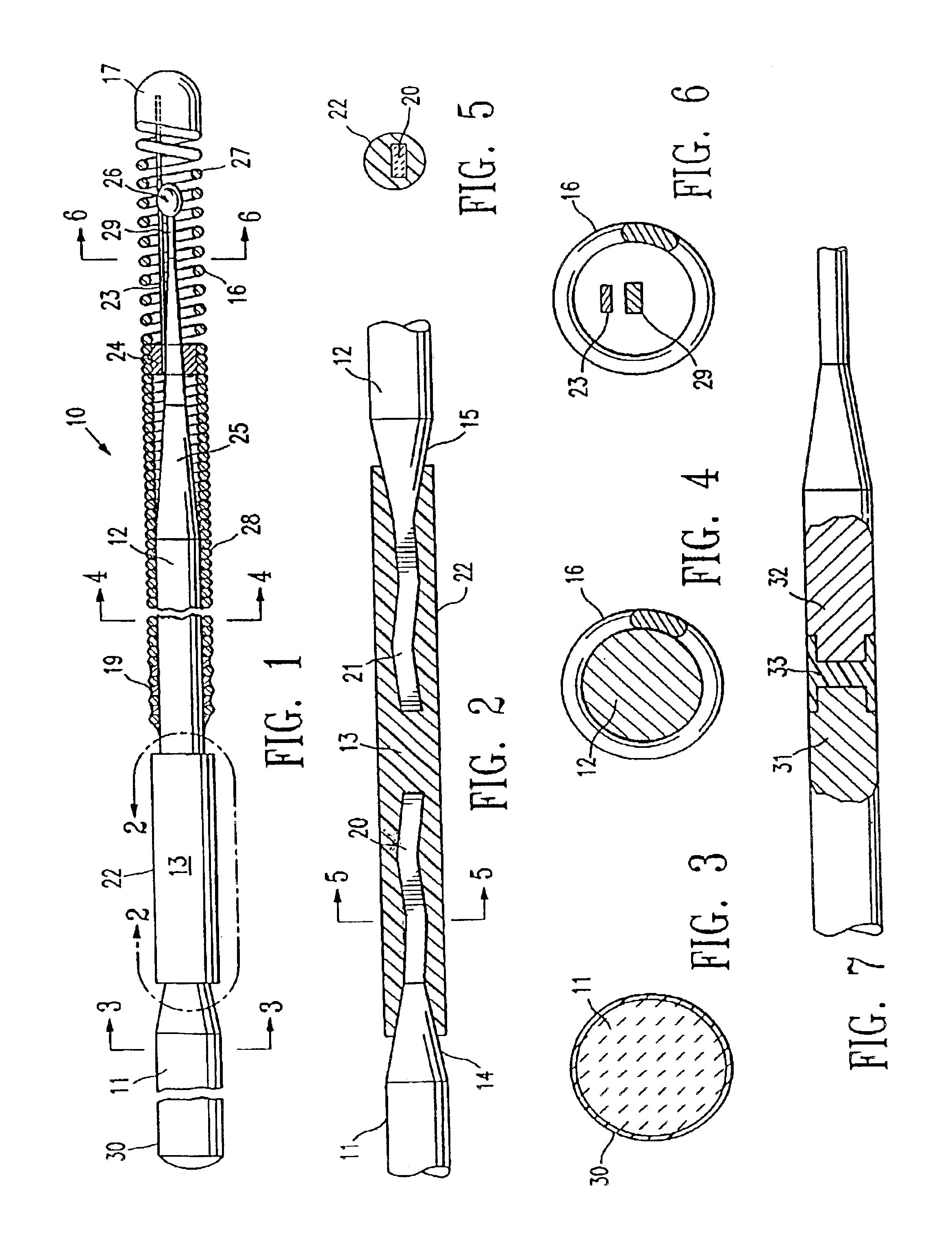MRI compatible guide wire
a guide wire and mri technology, applied in the field of medical devices, can solve the problems of nephrotoxic iodinated contrast agents employed in x-ray fluoroscopy, low but measurable incidence of short-term renal failure and allergic reactivity, and inability to observe ionizing radiation from x-ray fluoroscopy, etc., to achieve easy observation, small magnetic susceptibility, and easy to see
- Summary
- Abstract
- Description
- Claims
- Application Information
AI Technical Summary
Benefits of technology
Problems solved by technology
Method used
Image
Examples
Embodiment Construction
FIGS. 1-6 illustrate an embodiment of an MRI compatible guide wire 10 embodying features of the present invention that is used in a patient's body lumen, such as an artery or vein. The guide wire 10 generally comprises an elongated, relatively non-conductive proximal core section 11, a relatively short, non-magnetic, metallic distal core section 12, a polymeric connecting element 13 securing together the distal end 14 of the proximal core section 11 and the proximal end 15 of the distal core section 12. A helically shaped metallic coil 16, formed at least in part of non-magnetic material; is disposed about and secured to the distal core section 12. The coil 16 is secured at its distal end by a rounded body 17 of solder, weldment, or adhesive, at an intermediate location by a mass 24 of solder or adhesive, and at its proximal end by a mass 19 of solder, adhesive or other suitable material that joins the coil 16 to the distal core section 12.
The guide wire 10 shown in FIG. 1 generally...
PUM
| Property | Measurement | Unit |
|---|---|---|
| pressures | aaaaa | aaaaa |
| length | aaaaa | aaaaa |
| length | aaaaa | aaaaa |
Abstract
Description
Claims
Application Information
 Login to View More
Login to View More - R&D
- Intellectual Property
- Life Sciences
- Materials
- Tech Scout
- Unparalleled Data Quality
- Higher Quality Content
- 60% Fewer Hallucinations
Browse by: Latest US Patents, China's latest patents, Technical Efficacy Thesaurus, Application Domain, Technology Topic, Popular Technical Reports.
© 2025 PatSnap. All rights reserved.Legal|Privacy policy|Modern Slavery Act Transparency Statement|Sitemap|About US| Contact US: help@patsnap.com


